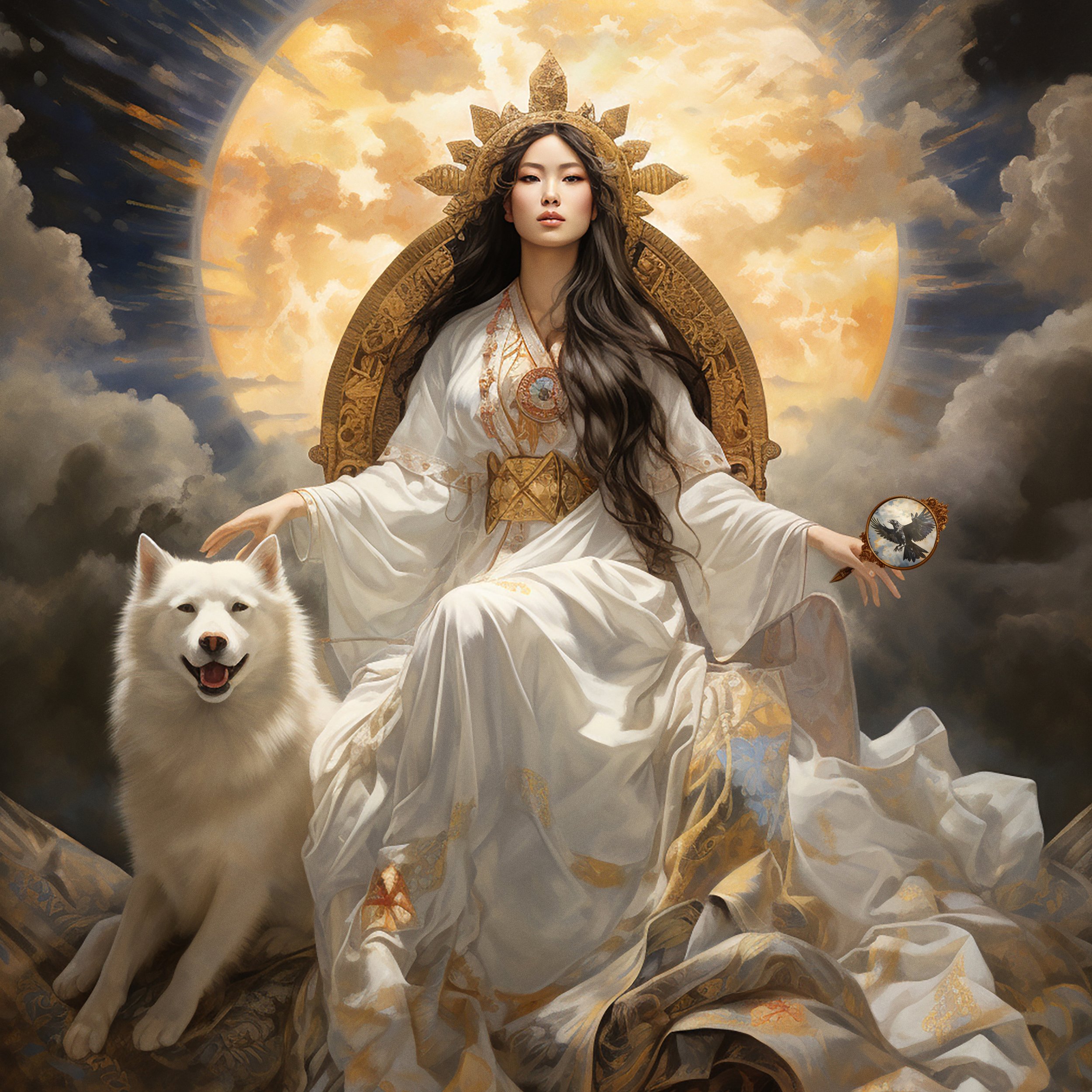Amaterasu
Amaterasu, the Japanese sun goddess, holds a significant place in Japanese mythology and Shinto religion. Her name, Amaterasu, translates to "shining in heaven" or "heavenly illuminator." As the supreme deity in the Shinto pantheon, Amaterasu is revered as the ruler of Takamagahara, the heavenly realm. According to mythology, Amaterasu was born from the left eye of the primordial deity, Izanagi, during his cleansing ritual in the divine plain of Onogoro. She emerged as a radiant and majestic goddess, representing the brilliance of the sun. With her radiant light, Amaterasu illuminates the world, symbolizing life, growth, and fertility.
Deeply intertwined with the natural world, Amaterasu's essence reflects a profound association with nature, flora, fauna, and the elemental forces. She is revered as the guardian of rice cultivation, a cornerstone of Japanese society, embodying the vital connection to agriculture and bountiful harvests, signifying abundance and prosperity.
In Japanese mythology, Amaterasu is often depicted as a benevolent deity who brings warmth and light to the world. Her divine presence is believed to protect against evil and ward off malevolent spirits. Moreover, she is associated with purity, and her shrine at Ise, known as Ise Grand Shrine, is one of the most important and sacred Shinto shrines in Japan.
Amaterasu's legends also reveal her interaction with other deities. One notable story involves her brother, Susanoo, the storm god. Susanoo's disruptive behavior and conflicts led Amaterasu to retreat into a cave, plunging the world into darkness. To coax her out, the other gods devised a plan, creating a mirror and performing joyful dances, luring Amaterasu to witness her own radiant reflection. Upon seeing her beauty and light, she emerged from the cave, restoring sunlight to the world.
Representations of the sun goddess often include celestial motifs, rays of light, and symbols of the sun. She is typically depicted as a radiant goddess adorned in flowing robes, often accompanied by the Yata no Kagami, a sacred mirror associated with her.
The two primary animals associated with Amaterasu, the Japanese sun goddess, are the raven and the white wolf. The raven, known as Yyatagarasu in Japanese mythology, holds a special significance in connection to Amaterasu. It is often depicted as a three-legged crow or raven, representing divine guidance and protection. According to mythology, Yatagarasu acted as a messenger for Amaterasu, conveying her will and divine intervention to the mortal realm. The presence of the raven is considered an auspicious sign, symbolizing Amaterasu's benevolent influence and guidance.
Another animal associated with Amaterasu is the white wolf. While not as prevalent in traditional myths, the white wolf is often linked to Amaterasu through cultural interpretations and artistic representations. The white wolf represents loyalty, strength, and guardianship, qualities that align with Amaterasu's role as a protector and ruler.
Amaterasu's influence extends beyond mythology and religion, permeating various aspects of Japanese culture. Her significance in Japanese history, folklore, and spiritual practices underscores her enduring legacy as a revered and beloved deity, embodying the warmth, light, and life-giving power of the sun itself.


